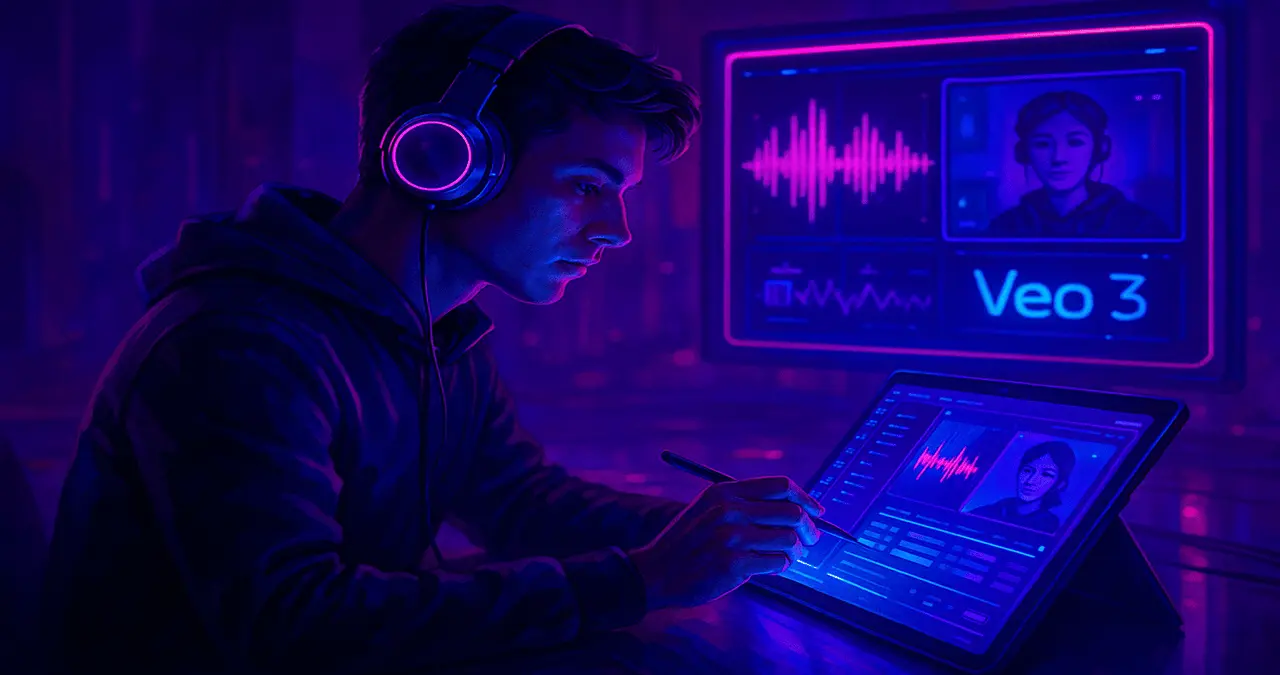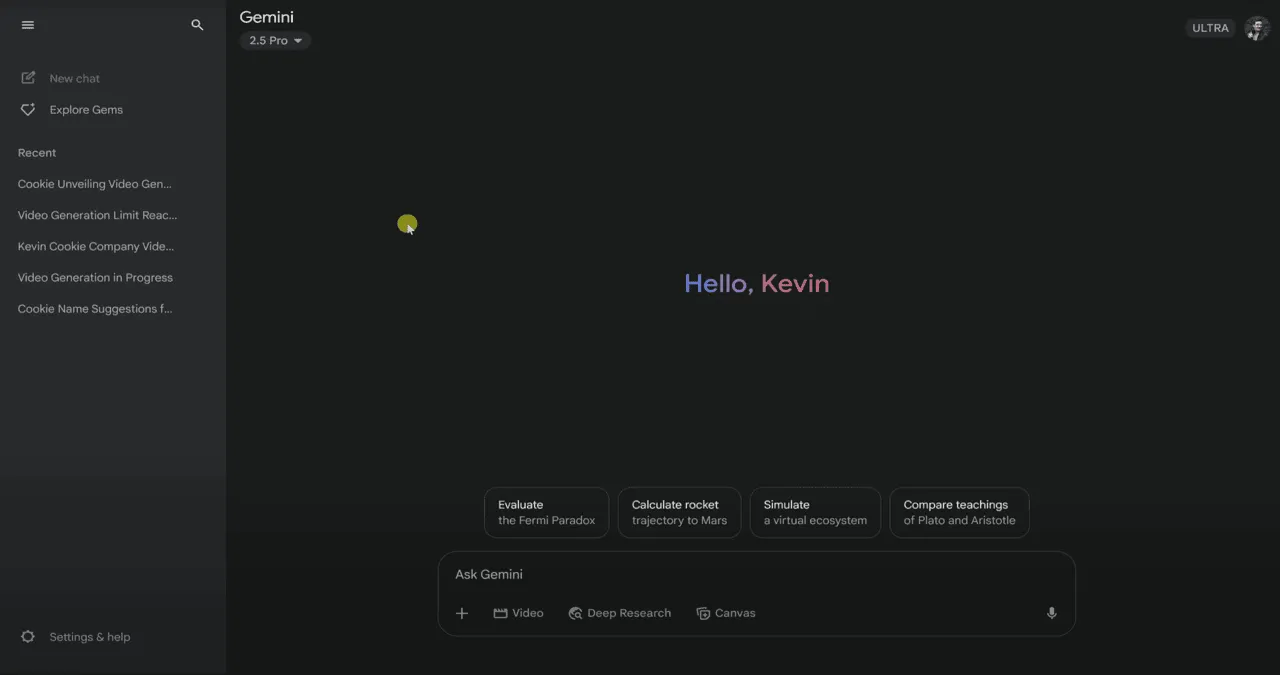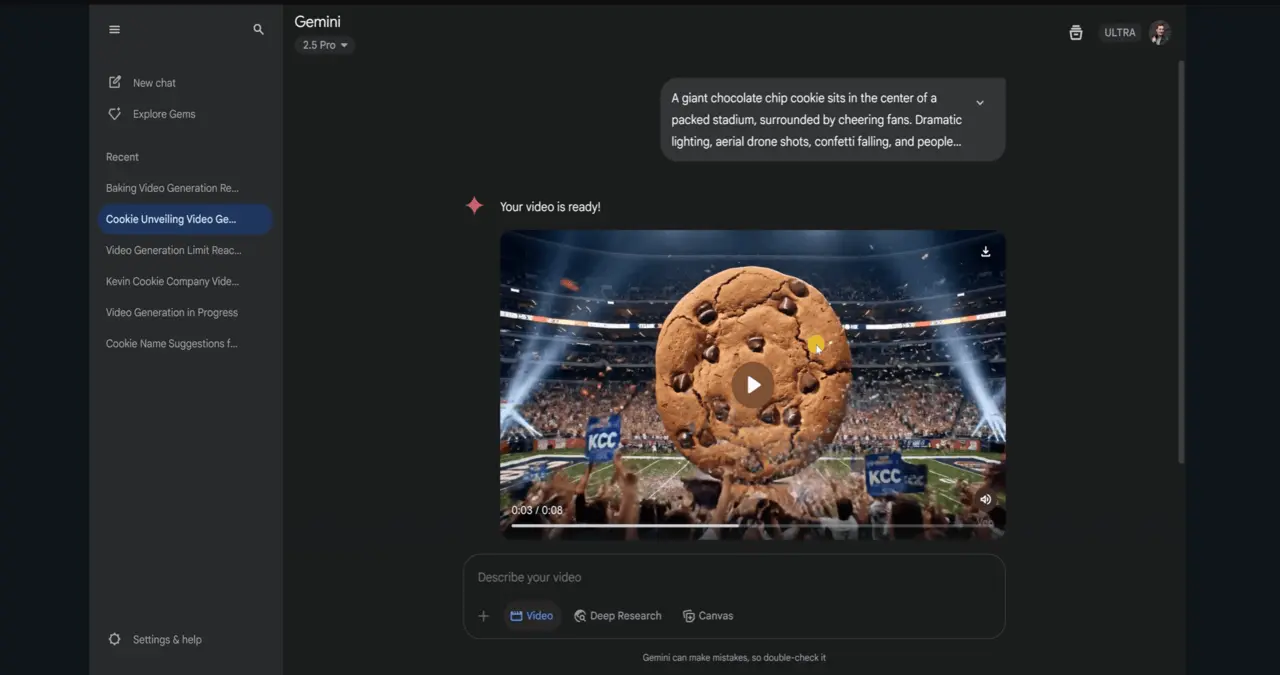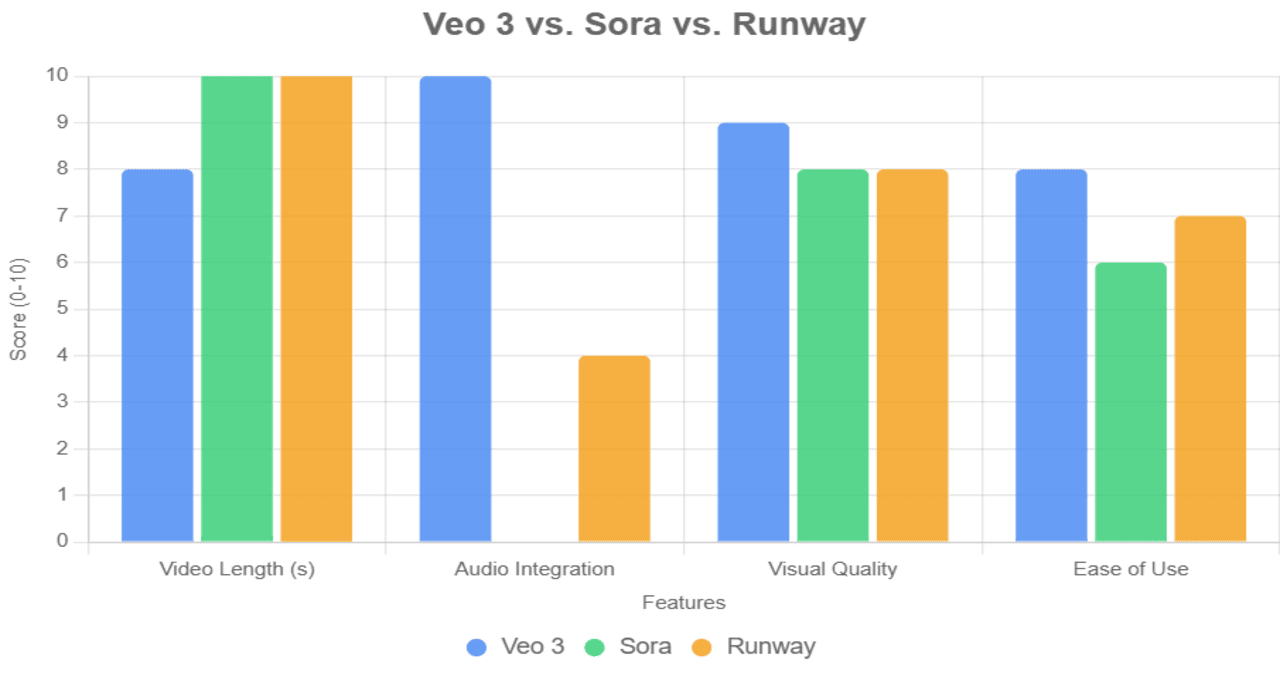AI video tools are transforming how creators tell their stories, and Google Veo 3 is at the forefront. Google DeepMind is known for its creative projects like AlphaGo. Veo 3, which was made by the talented team there, turns your text prompts into beautiful movies with synchronised sound.
It’s an exciting time for storytellers as technology makes sharing their visions more accessible and engaging! After spending a week testing this tool, I’m thrilled to provide my first hand experience and perspectives on whether it meets expectations.
Table of Contents
What Is Google Veo 3?
Google Veo 3 is an AI-powered tool that turns text prompts into short, realistic videos with sound that matches. It’s not just another AI that turns text into video; it’s a big step forward in making movies available to everyone. Veo 3, made by Google DeepMind, uses cutting-edge AI research to make realistic sounds and images from very little input. Its key features include:
- Native Audio Generation: This feature adds sound effects, background noises, and dialogue to videos on its own.
- Realistic Lip Sync: AI perfectly matches the character’s speech with their mouth movements to make it look real.
- Physics-Based Video Simulation: Videos reflect real-world physics for natural motion and visuals.
- Multi-Input Prompts: Make videos using text descriptions or pictures as guides.
- Integration with Flow App: Use Google’s Flow video editor to make movie-like clips.
- Enterprise Access: Google’s Vertex AI platform lets you make videos that can be scaled up.

These features make Veo 3 a powerful tool for creators looking to experiment with AI-driven filmmaking. It is currently available through Google’s Gemini Ultra platform and Vertex AI, with paid subscription plans required for access. For more details, visit Google DeepMind.
Why It’s Important for Creators and Filmmakers
Veo 3 makes it easier for creators to create professional-quality videos. You no longer need a camera crew or a lot of editing software to make interesting short films anymore. Filmmakers can use it to make prototypes of scenes, try out ideas, or make quick content for social media. Because it works with platforms like Canva, more people can use it, even those who aren’t very tech-savvy. This making of storytelling tools available to everyone is a big step forward for the creative industry.
Veo 3 also opens up new possibilities for various fields:
- Marketers can make ads or product demos that stand out.
- Teachers can make interesting pictures for lessons or explanations.
- Indie filmmakers can try out creative ideas or make test scenes.
It works great for sites like YouTube Shorts and TikTok because it can make high-quality, short-form content. Users on social media say that creators are excited about its potential to make content go viral and even make money (@wannercashcow on X).
How I Got Access to Google Veo 3
Accessing Veo 3 requires a subscription to Google’s AI plans. There are two main options:
- Google AI Pro: Offers limited access to Veo 3 Fast and Flow with limited access to Veo 3, along with other features like 2 TB storage and 1,000 monthly AI credits.
- Google AI Ultra: Provides the highest limits and exclusive access to Veo 3, including premium features in Flow, along with 30 TB storage and 12,500 monthly AI credits.
For exact pricing, you can visit Google’s official site. I used the Google AI Ultra plan for my tests, as it provided the most comprehensive access to Veo 3’s capabilities. The tool is also integrated into Canva, making it easier for non-technical users to create videos (Canva Newsroom).
First Impressions of the Platform
The Gemini Ultra interface is easy to use and looks nice. It has a simple text box for entering prompts and options for changing the resolution or style. My first thought was that it was a place where people could be creative.

But I wanted more advanced settings to make the output just right. The dashboard is simple, so people who aren’t tech-savvy can get started right away. The interface is smoother and easier to use than other AI video tools, but it doesn’t have as many editing options as tools like Runway.
Testing Google Veo 3: This is what I made.
I tried out Google Veo 3 with a number of different prompts to see how flexible it is:
- “A futuristic city at sunset with flying cars and neon lights.”
- “A lion chasing a gazelle across a savanna, cinematic zoom.”
- “A cozy coffee shop conversation between two friends, warm lighting.”
Each prompt was kept under 50 words for clarity. The output quality was impressive. The city of the future had bright colors and detailed skyscrapers. Flying cars moved smoothly through the air. The lion chase was like a nature show, with real dust clouds and animal roars.

The coffee shop scene stood out the most because the lighting was warm and the dialogue sounded natural and matched the pictures well. Users on social media have praised Veo 3’s ability to deliver “creepily accurate” results from detailed prompts (@aiseomastery on X).
What I Liked the Most (Pros)
In several ways, Veo 3 went above and beyond what I expected:
- Ultra-realistic video output: The textures, lighting, and details are as good as those in professional videos.
- AI-generated audio: The sound effects and speech are perfectly in sync, which makes the videos more interesting
- Smooth transitions and lighting: The scenes flow naturally and look like they were made for the movies.
- Creative storytelling possibilities: Veo 3 can easily handle a lot of different types of genres, from sci-fi to drama.
These strengths make it a powerful tool for quick, high-quality content creation, especially for short-form videos like YouTube Shorts or TikTok-style content. The synchronized audio, including dialogue with accurate lip-sync, is a standout feature that sets Veo 3 apart from competitors (@storn_max on X).
Where Veo 3 Still Needs Work (Cons)
Veo 3 has some problems, even though it has some good points:
- Limited to 8 seconds per clip: Great for short stories, but not so great for longer ones.
- Access restrictions: Paid plans might not include people who only use them once in a while.
- No editing controls post-generation: You can’t change the output without starting over.
- Slight robotic voice or over-polished feel: Dialogue can sound too clean, lacking human grit.
These limitations mean Veo 3 isn’t ready to replace traditional filmmaking entirely but is excellent for specific use cases. Google DeepMind notes that audio synchronization, particularly for shorter speech segments, is still being refined (Google DeepMind).
Is Veo 3 Better Than Sora or Runway?
Comparing Veo 3 with competitors like OpenAI’s Sora and Runway:
| Feature | Veo 3 | Sora | Runway |
|---|---|---|---|
| Video Length | 8 seconds | Up to 20 seconds | Up to 16 seconds |
| Audio Integration | Sound effects + speech | No audio | Limited audio |
| Visual Quality | Ultra-realistic | High-quality | High-quality |
| Ease of Use | Intuitive interface | Prompt-based, less polished | Advanced editing tools |
| Access | Paid (Gemini Ultra, Vertex AI) | Limited beta | Paid plans |
| Best For | Short-form content | Experimental videos | Editing-heavy projects |

Veo 3 is great at combining audio and video, but it has problems with clip length and access. Sora has longer clips but no sound, while Runway is better for people who need powerful editing tools. Veo 3 is perfect for YouTube Shorts or TikTok because it has good sound and looks like a movie.
Who Should Use Veo 3?
Veo 3 is especially good for:
- YouTubers: Great for short videos, teasers, and introductions.
- Teachers: Make interesting visuals for lessons or explanations.
- Marketers: Make ads or product demos that stand out.
- Indie filmmakers: Try out scenes or creative ideas.
Its integration into Canva makes it accessible to a wider audience for various creative projects, from social media posts to presentations. It’s also being used by studios like Promise to improve movie production workflows.
Frequently Asked Questions (FAQs)
What is Google Veo 3?
Veo 3 is Google DeepMind’s AI video generator that turns text prompts into realistic, cinematic videos with synced audio.
Is Google Veo 3 free to use?
No, it requires a subscription to Google AI Pro or Ultra plans.
How is Google Veo 3 different from Sora or Runway?
Unlike Sora and Runway, Veo 3 integrates realistic sound design and voice sync directly with visual generation.
Can I use Veo 3 to make YouTube videos?
Yes, it’s ideal for short-form YouTube content, intros, concept visuals, and storytelling in under 8 seconds.
What are the limitations of Veo 3?
Short duration (8 seconds), limited access, and occasional over-polishing in tone and visuals.
Can Veo 3 be used commercially?
Yes, it supports commercial use through appropriate subscription plans and enterprise access via Vertex AI.
Is Google Veo 3 available globally?
It’s available in over 70 countries through Google AI Ultra, with some restrictions in regions like the European Economic Area (Google Gemini).
Final Thoughts: Is Veo 3 the Future of Making Filmmaking?
Veo 3 opened my eyes to many things. It looks into the future, where it can create realistic videos with in-sync audio in seconds. It’s not yet ready to replace traditional filmmaking, as it has some limitations, but it’s a great tool for specific tasks.
Creators should definitely give it a shot, especially for short pieces. Veo 3 could become a must-have for filmmakers as technology gets better. Its potential is exciting for now, but we need to think carefully about its limits.
Also Read This: How to Make Money Using AI in 2025: 25 Best ideas
Also Read This: How to Start an Automated YouTube Channel Using AI Tools


